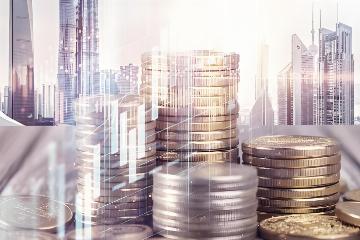Bank of Japan to Continue Raising Interest Rates
Advertisements
In a significant recent development for Japan's economic landscape, former Bank of Japan (BOJ) Governor Haruhiko Kuroda has made bold assertions about the state of Japan's economy, indicating that it has "fully" exited deflationHe champions the continuation of interest rate hikes as an expected and natural step towards normalizing monetary policyThis statement not only encapsulates the current economic reality of Japan but also hints at the trajectory of future monetary policy under the BOJ's guidance.
Moreover, during a meeting in Tokyo on February 6, Kuroda expressed his views assertively, declaring, "The Japanese economy has fully recoveredIt is quite natural for the BOJ to normalize its policy." Kuroda's decade-long tenure at the BOJ saw the implementation of extensive quantitative easing measures intended to spur the Japanese economyThis campaign, launched in 2013 with the goal of achieving 2% inflation roughly within two years, has left an indelible mark on Japan's economic narrative
Advertisements
While experts have engaged in vigorous debates regarding the merits and drawbacks of such policies, the undeniable truth remains that they have had profound implications for economic conditions in Japan.
Kuroda's remarks seem timely, as data from the previous year indicates that, as of December, consumer prices in Japan have been rising at a pace that aligns with the BOJ's inflation targets over the past three yearsThe most recent government figures have also shown a steady increase in wages, with the latest data reflecting the fastest growth in wages since 1997. This signals the onset of a potentially beneficial cycle between wages and inflation—a sentiment that Kuroda recognizes, stating, "Without a doubt, the virtuous cycle between wages and inflation has been restored." This provides robust support for the BOJ's forward motion towards monetary policy normalization.
It is essential to note, however, that Kuroda's perspective diverges from that of the current government led by Prime Minister Shigeru Ishiba
Advertisements
The Ishiba administration remains skeptical, contending that it may still be premature to declare victory in the fight against deflationThey believe that the risks of falling prices persist due to Japan's historical struggle with deflation over several decades, suggesting that dissociating from the shadow of deflation will require careful and continued effortDespite the optimistic economic data, the intricate and unpredictable nature of Japan's economy compels the Ishiba government to maintain a prudent stance.
On the same day Kuroda made his statements, the performance of the yen attracted considerable attention, reaching a two-month highThis upward movement can be linked closely to remarks made by one of the BOJ's most hawkish board members, Naoki Tamura, who asserted that the benchmark interest rate should at least double from its present level of 0.5% by the beginning of next year
Advertisements
Tamura is often seen as the most “hawkish” policymaker within the BOJ, with his opinions typically eliciting strong market responsesIn August 2023, he predicted that Japan could achieve its 2% inflation target by early 2024; subsequently, in March 2024, the BOJ ended its long-standing negative interest rate policy, showcasing the accuracy of his forecastsHis recent comments further bolster market expectations that the BOJ intends to persist with interest rate hikes.
Indeed, since the appointment of Governor Kazuo Ueda, the BOJ has already increased rates three timesFollowing the last rate hike announcement by Ueda, he committed that if the BOJ's economic projections hold true, further increases would followConsequently, a pressing question arises: when will the next rate hike occur? According to a survey of economists, it is forecasted that the BOJ may wait until summer to raise rates again
- Robust Drive of the American Economy
- UK to See Two More Rate Cuts
- Global Market Volatility
- Emerging Technologies and Cash Flow in Sectors
- 2025: A Year of Opportunity in AI Endpoints & Apps
In a recent seminar, 56% of the 45 observers polled anticipated that the next hike would come in July, following the recent increase that brought rates to the highest level since 2008. September has emerged as the second most favored timeframe for a potential hike, with 18% of respondents predicting an increase then, while 9% opine that it might occur in JuneHowever, the survey also suggests that the BOJ might pause before elevating rates to 0.75%, the highest since 1995.
The BOJ's trajectory of rate hikes represents an effort not only to normalize monetary policy but also to address the inflationary pressures that accompany economic recoveryYet, this path is not free from risksIncreasing interest rates can heighten borrowing costs for both businesses and individuals, potentially dampening investment and consumer spendingParticularly, as the global economy grapples with uncertainty, Japan’s recovery journey remains fraught with challenges

Leave a Reply
Your email address will not be published. Required fields are marked *